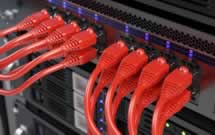Key points:
- School districts need bigger cybersecurity budgets and support mechanisms
- Cybersecurity threats are not going away, and knowledge is a large factor in protecting networks
- See related article: 4 steps to avoid a ransomware attack
Now more than ever, safeguarding students and staff from targeted cyberattacks is critical to the health of our U.S. education system. Local K-12 schools are a top target for cybercrime. Estimates from the nonprofit organization K12 Security Information Exchange reveal more than 1,300 publicly disclosed cyberattacks against U.S. schools since 2016.
The size and scope of these threats amplified during COVID-era hybrid learning, when schools were forced to rapidly adopt cloud-based collaboration technologies at scale. But even though students have returned to the classroom post-pandemic, just like every other industry, the K-12 threat landscape isn’t slowing down. …Read More


